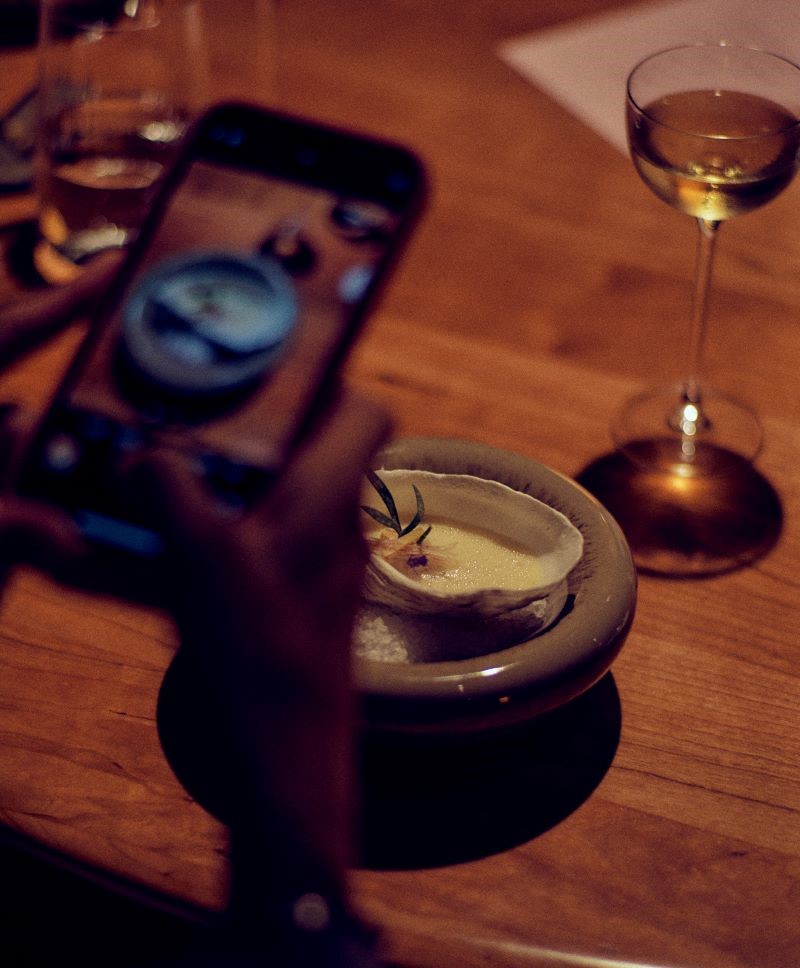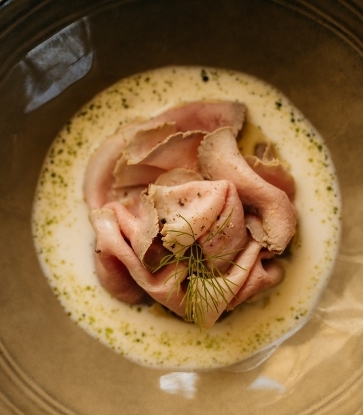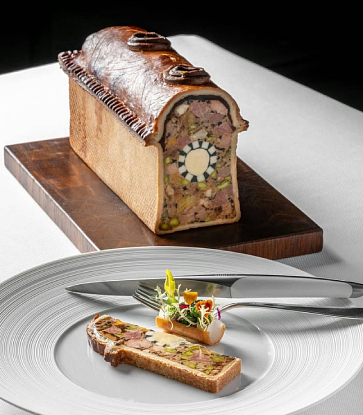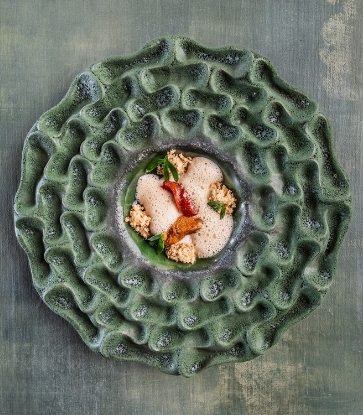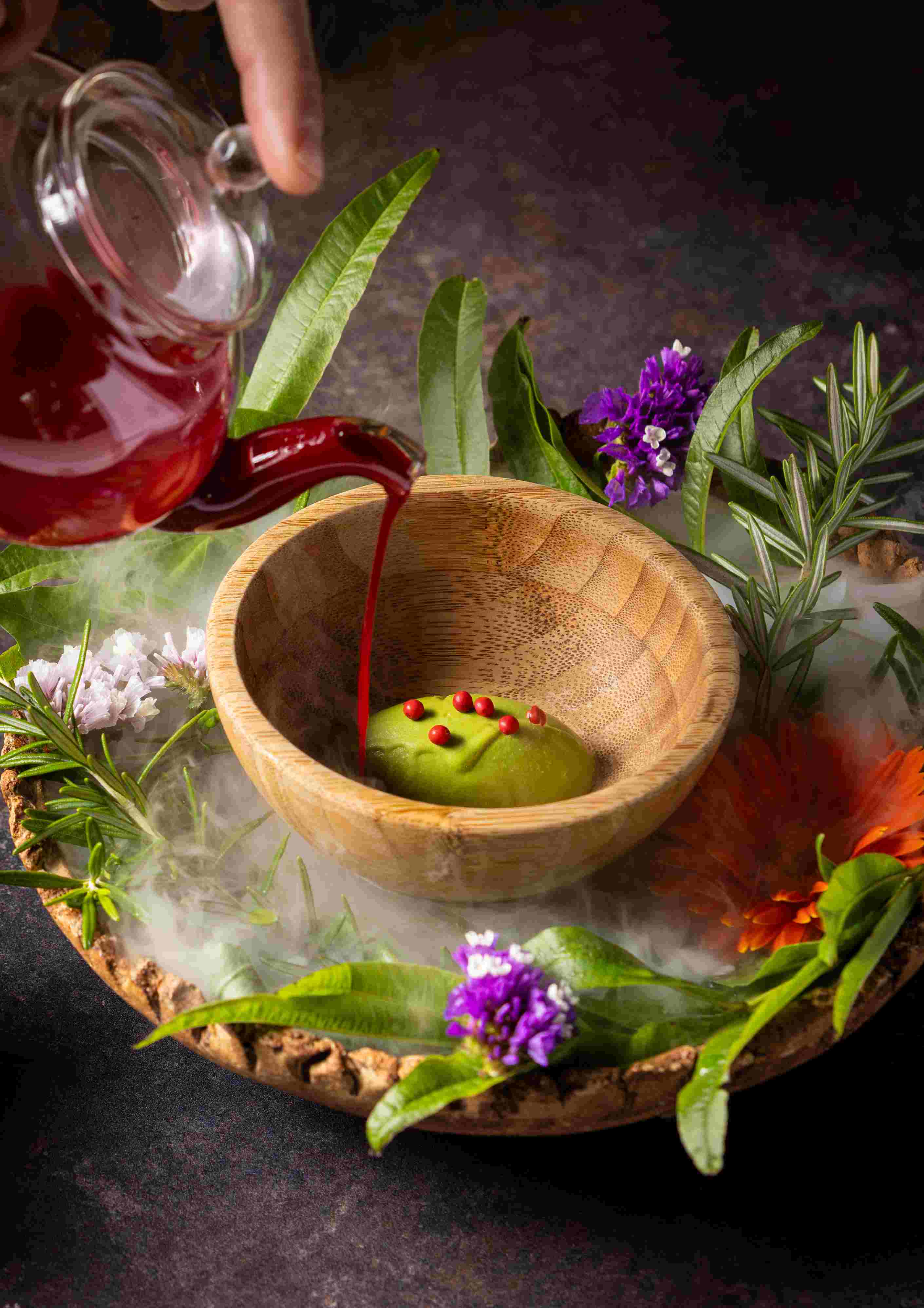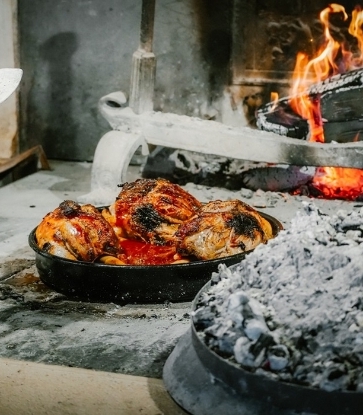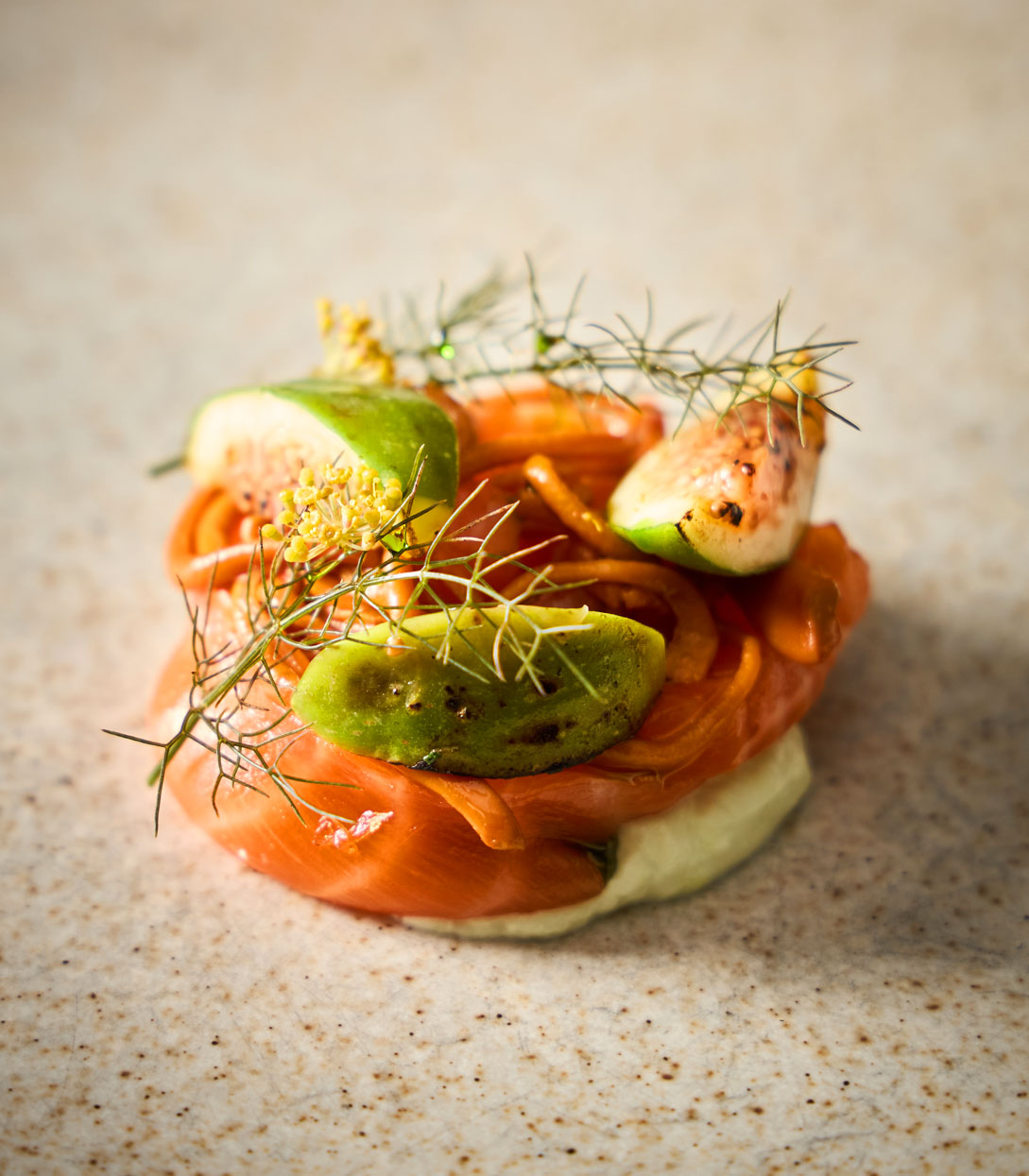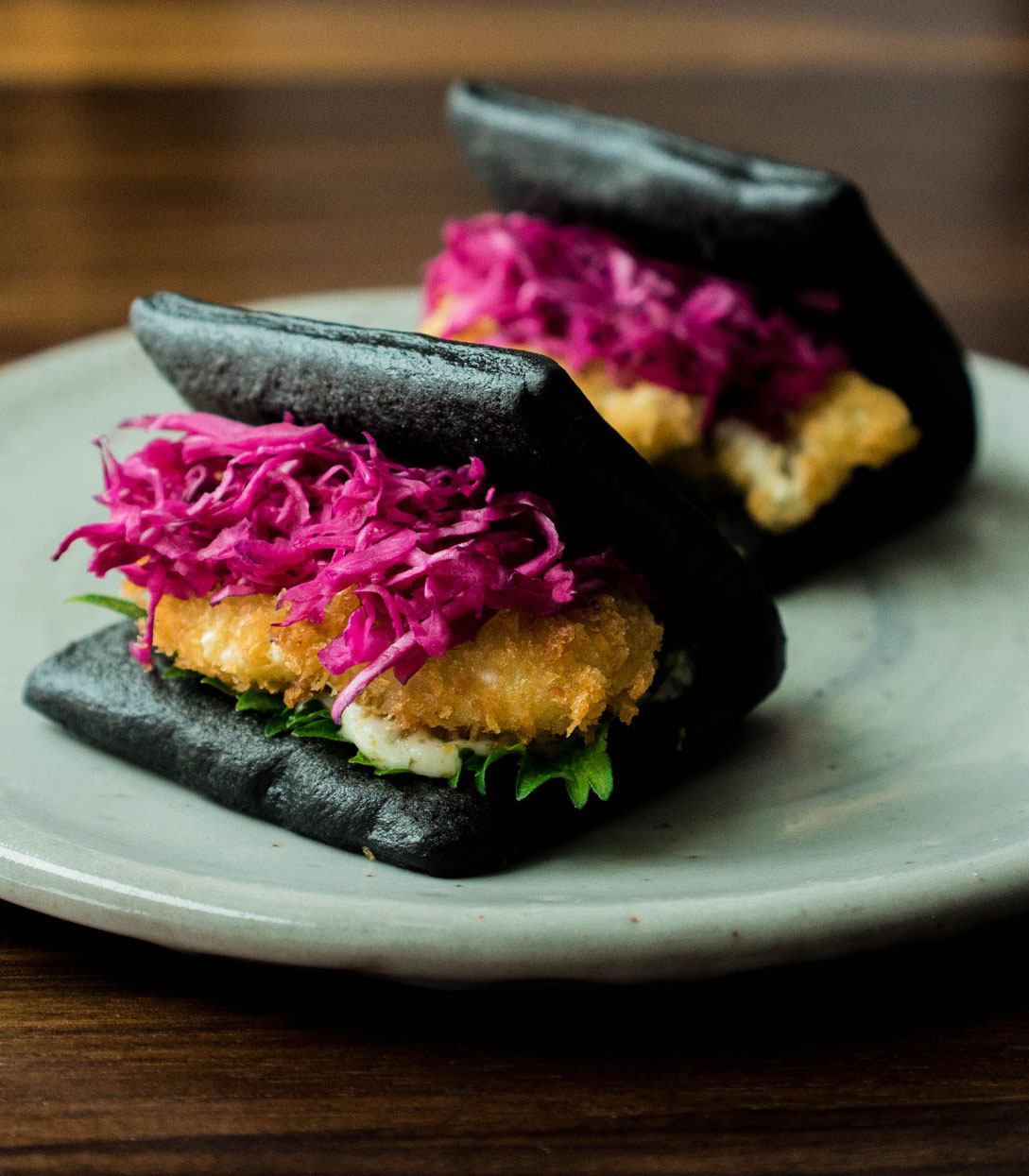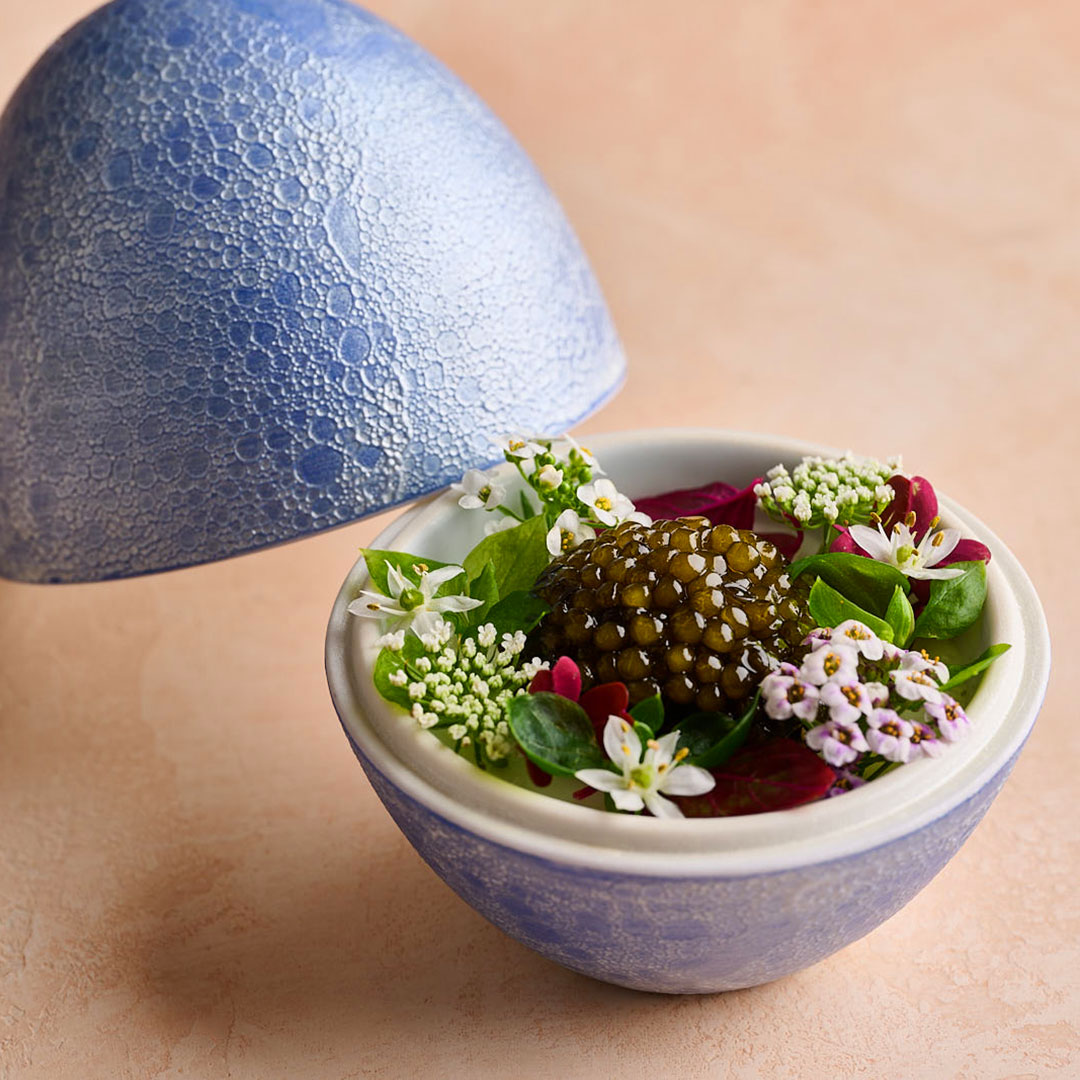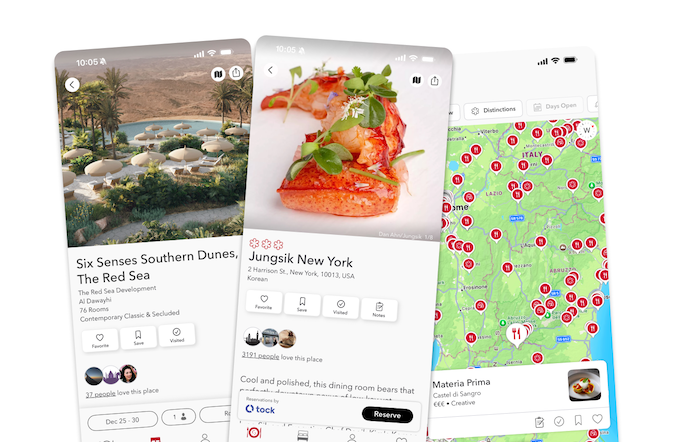The wine pairing with Harbor House’s tasting menu has already switched over to reds when the kohlrabi course arrives.
The plant – a bulbous brassica with a dense, earthy flesh like a broccoli stem – is a headliner at this Two Star and Green Star restaurant on the northern California coast, treated on the grill like meat.
That a cousin of the cabbage can go toe-to-toe with a steak is a testament to the extraordinary ingredients Chef Matthew Kammerer grows on his farm, a one-acre expanse on the restaurant’s (and hotel – Harbor House Inn has One MICHELIN Key) remote and rugged campus.
“This is a brassica-focused restaurant,” Kammerer says with winking understatement: one of the most lauded kitchens in the country is indeed obsessive with its kohlrabi, turning out a smoky, swaggering plating that reflects years of study and experimentation.
Since reopening in 2018 under Kammerer’s helm, Harbor House has gained acclaim for its intensely local menu, directed by the best seafood and meat Mendocino County has on offer and what’s peaking that day at the Harbor House Ranch.
It won its first MICHELIN Star in 2019 and a Green Star, which denotes a devotion to sustainability, in 2020. It has been awarded Two Stars each year since 2021. (The MICHELIN Guide California selection for 2025 will be announced in Sacramento on June 25.)

At the Harbor House farm, crops are planted across 300 beds so that they peak intermittently, supplying the kitchen with a different, rotating harvest week after week. Savvy techniques – like growing a taller variety of a plant to shade its shorter neighbor – help preserve water in drought-prone California.
A moveable, miniature greenhouse known as a high tunnel that's used on the farm extends the season of crops like kohlrabi, allowing it to feature on the menu for much of the year.
Between the farm and the kitchen team’s local foraging, some 90 to 95 percent of Harbor House’s plant ingredients on the menu come from in-house.
“The way our menu works is, ‘What do we have?’ Not, ‘What do we want?’” Kammerer says. “That gives us a lot more consistency with the products that we're using at the end of the day. You really start to understand them.”

For the kohlrabi, that means knowing at what point of the year it will be most moist – “almost like an apple” – and how to turn a late-on-the-vine fava bean into its silky miso dressing.
The vegetable is typically served barbecued – cooked low and slow over up to eight hours and painted with clarified butter that adds depth and prevents burning.
“It probably loses 40 percent of its weight by the time it gets sent out, which creates this dense, smoky, almost meaty texture and flavor that really stands up to that kind of end-course of the menu,” Kammerer says.
A raw preparation, dressed lightly in kelp oil and lemon juice, is plated beside the grilled one, for a contrast of fresh and rich. Local citrus – nowadays small segments of Bearss lime – adds acid.

Together, the dish amounts to an inimitable expression of its time and place, the finest bounty of the earth underfoot that day in the stretch of cool Pacific cove.
“That's our goal,” Kammerer says, “to have a singular restaurant, a singular experience that you can only have here, that you can't recreate anywhere else. That is our new perception of what luxury means in 2025.”
Hero image: Joseph Weaver / Harbor House kohlrabi



